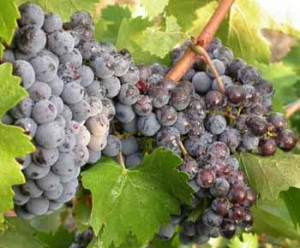Vintners in the Grand and North Fork valleys may get all the
attention, but winemaking in the Roaring Fork Valley has a history that goes
back to the days when Italian immigrants were settling the region.
Hailing from the borderlands between France and Italy, two countries
synonymous with wine, immigrants here continued a tradition passed down
generation to generation, barrel to bottle to glass.
“A glass of wine with a meal was as important as a slice of
bread,” says Glenwood Springs resident Hank Bosco. His father Mike was key
to keeping valley residents’ glasses full.
It was Prohibition, ironically, that fueled the valley’s wine culture.
Despite the ban on brewing, a $5 permit from the post office allowed 50
gallons of homemade wine. Mike Bosco, born in 1900 near Asti, Italy as
Marco, saw an all-American opportunity. He drove up and down the valley,
stopping at the homes of immigrant farmers, ranchers, miners and business
owners taking orders for wine grapes. Then he’d drive to Medford, Calif.,
where he’d hand-select rows of grapes to be shipped to Colorado.
By fall, up to a half-dozen boxcars of Zinfandel grapes arrived at train stations from Rifle to Aspen.
Wine drinkers squeezed all they could from those grapes, by hand
and foot. The first pressings made wine, poured straight from the barrel
three meals a day. Second pressings made a lighter piquette. For
risk-takers, the third might be distilled into less-than-legal moonshine
grappa.
“That grappa was like dynamite,” Bosco says.
Valley basements and potato sheds filled with oak barrels of Zinfandel. Some
winemakers turned to local ingredients, too, from homegrown grapes to
chokecherries to dandelions. “Anything to take the rigors of the everyday
world away for a bit,” says Ashton Durrett, owner of the Italian Underground
restaurant in Glenwood Springs, who used to help his cousin make wine.
When Prohibition ended, the valley’s winemaking nearly did, too.
It was easier to go to the liquor store than buy grapes off the train. It
hasn’t vanished completely, though. Down the road from Jerome Gamba’s Silt
Mesa home, a dozen 52-gallon barrels of Zinfandel and Barbera wine, his own
vintage, fill a back room in his barn crowded with bottles and plastic
tubes.
“We’re probably some of the last people in the valley still
making wine,” says Gamba, whose children are taking part, too, in a process
not so different from the one his father and grandfather used in their
Glenwood Springs home. “The Italian tradition is important to us.”



